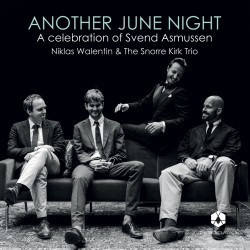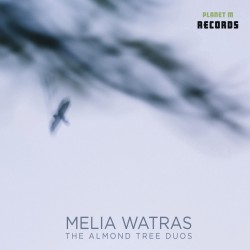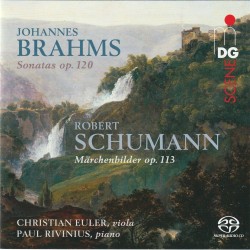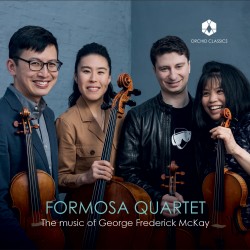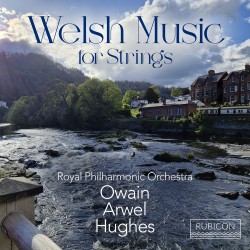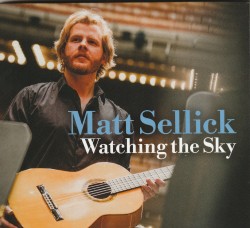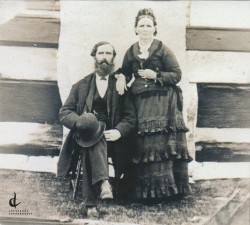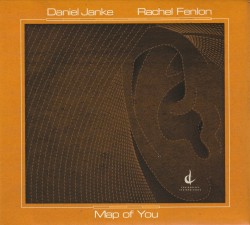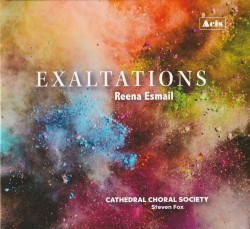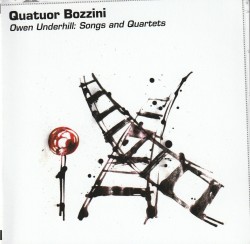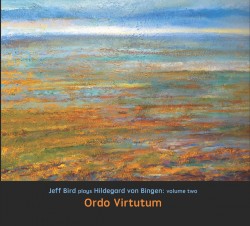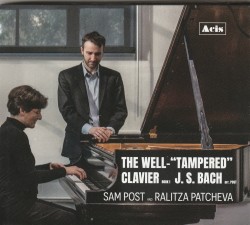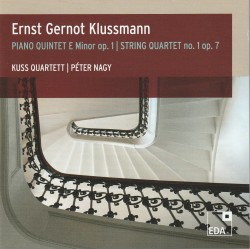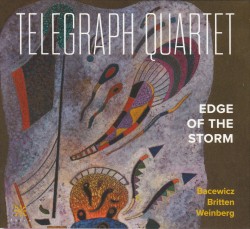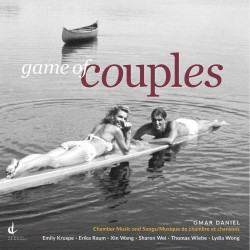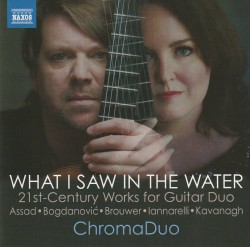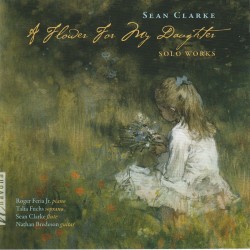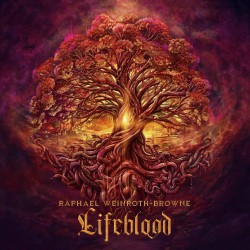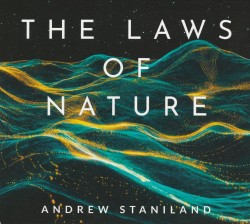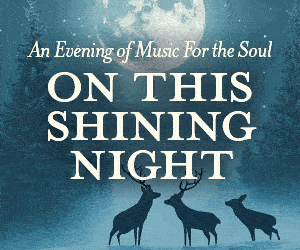Editor's Corner - November 2025
As I write this my street is adorned with ornamental lights, pumpkins, goblins, skeletons and gravestones in advance of Hallowe’en, so perhaps it is fitting that I begin my column with a work based on ghost stories. Alice Ping Yee Ho is one of Canada’s most prolific composers, and surely one of the most recorded, with a discography encompassing 13 CDs devoted to her songs and solo piano works, electronic dance scores, chamber music, orchestral pieces and several operas. There are also some two dozen compilations that include her compositions.
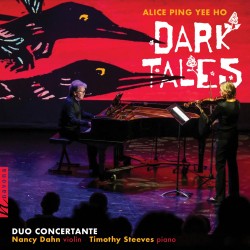 A recent case in point is Alice Ping Yee Ho – Dark Tales, the latest from Duo Concertante (Navona Records navonarecords.com/catalog/nv6748), an evocative five-movement work inspired by Tom Dawe’s story collection An Old Man’s Winter Night. Each movement channels a ghost story rooted in Newfoundland folklore. The Newfoundland-based duo of violinist Nancy Dahn and pianist Timothy Steeves who commissioned the work is in top form here, giving each movement a distinctive colour.
A recent case in point is Alice Ping Yee Ho – Dark Tales, the latest from Duo Concertante (Navona Records navonarecords.com/catalog/nv6748), an evocative five-movement work inspired by Tom Dawe’s story collection An Old Man’s Winter Night. Each movement channels a ghost story rooted in Newfoundland folklore. The Newfoundland-based duo of violinist Nancy Dahn and pianist Timothy Steeves who commissioned the work is in top form here, giving each movement a distinctive colour.
From the brash opening of the title work, through the eerie Landwash Spirits telling of shipwrecks and ghosts at sea, Sheba, in which the narrator is saved by the dog he had previously had to put down, the hauntingly beautiful Woman in the White Dress, to the concluding House in the Drook which tells of the misfortunes that befall a house built upon a “fairy ring,” the hour-long cycle captivates our imaginations.
Originally premiered in an immersive performance with three-dimensional projections, the audio CD captures the intensity and mystery of Ho’s vision, bristling with the enchantment of the spirit world.
Listen to 'Dark Tales' Now in the Listening Room
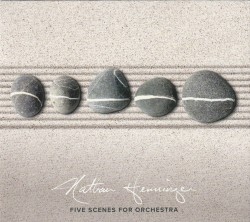 Although not eerie in the same way, Five Scenes for Orchestra by Azores- and New York City-based Canadian composer Nathan Henninger (rich records nathanhenninger.com/music) is equally dramatic. The recording features the Scoring Berlin Orchestra, session musicians drawn from Berlin’s most prestigious orchestras, with conducting duties shared by the composer and Bernhard Wünsch. Although we are not given clues to a specific story line from the movement titles – Misterioso, Maestoso, Brightly, Misterioso and Gently – if you close your eyes you can likely invent a scenario to go with the lushly orchestrated sounds.
Although not eerie in the same way, Five Scenes for Orchestra by Azores- and New York City-based Canadian composer Nathan Henninger (rich records nathanhenninger.com/music) is equally dramatic. The recording features the Scoring Berlin Orchestra, session musicians drawn from Berlin’s most prestigious orchestras, with conducting duties shared by the composer and Bernhard Wünsch. Although we are not given clues to a specific story line from the movement titles – Misterioso, Maestoso, Brightly, Misterioso and Gently – if you close your eyes you can likely invent a scenario to go with the lushly orchestrated sounds.
The 20-minute suite is introduced with a brief prelude entitled Horn (Henninger’s own instrument), setting the stage for the adventure to come. I’ll let the composer’s descriptions give you a sense of the drama that ensues: Scene 1 – a primordial or primitive space out of which emerges the principal melody in the flute; Scene 2 – opens eerily and develops the material in a spirited way; Scene 3 – a diatonic space… drawing to a serene orchestral glow; Scene 4 – a more dramatic, cinematic and dissonant exploration… as we encounter darker elements; Scene 5 – shimmers as the celesta softly chimes [and] the horn and flute share a poignant dialogue [before returning] to the romantic theme in full bloom.
Toronto-born Henninger is a composer and conductor of music for film, TV and the concert stage, all of which is reflected in this impressive orchestral debut recording.
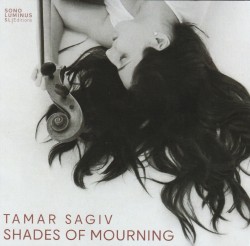 Another debut recording, Shades of Mouring, features Israeli-born, New York City-based cellist and composer Tamar Sagiv (Sono Luminus SLE-70041 sonoluminus.com/sonoluminus/shades-of-mourning). In the notes Sagiv says “I am writing these words while the Middle East, my place of birth, is bleeding. Like me, my friends, family, and neighbours who live on the other side of fences built to divide us carry excruciating pain that flows deep as the wars continue.”
Another debut recording, Shades of Mouring, features Israeli-born, New York City-based cellist and composer Tamar Sagiv (Sono Luminus SLE-70041 sonoluminus.com/sonoluminus/shades-of-mourning). In the notes Sagiv says “I am writing these words while the Middle East, my place of birth, is bleeding. Like me, my friends, family, and neighbours who live on the other side of fences built to divide us carry excruciating pain that flows deep as the wars continue.”
The title work and the following Roots include a plaintive voice – presumably Sagiv’s – rising above the solo cello line in a haunting, evocative melody interrupted at times by yelps and brutal outbursts from the cello. Intermezzo is a brief, peaceful meditation for cello quartet in remembrance of her grandmother, with all lines played by Sagiv.
For the next four pieces Sagiv is joined by Leerone Hakami, violin and Ella Bukszpan viola. The first and fourth – And Maybe You Never Used to Be and Imaginary World – show the influence of Philip Glass, in particular his Mishima Quartet in the latter. My Clouds of Grief captures the heaviness that follows mourners when “colors drain from the world around you” and The End of Times in which Sagiv grapples “with uncertainty. Will we find relief in our final movements, or will pain be our lasting legacy?”
Inspired by Chet Baker’s Almost Blue the final two tracks – a solo cello work and cello quintet, again with all parts played by Sagiv – maintain the overall sense of grief, but Sagiv says “I wanted to end this album not in sorrow, but with the same quiet hope that music has always given me. The possibility that even after profound loss, we can still move forward. Together.” Let’s hope she’s right.
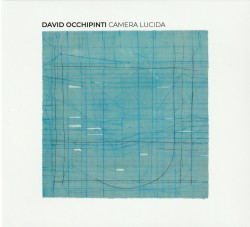 There are some minimalist aspects to David Occhipinti’s Camera Lucida (elastic records davidocchipinti.bandcamp.com/album/camera-lucida-elastic-recordings), a collection of chamber works that brings to my mind the music of the late Michael J. Baker, longtime artistic director of Toronto’s Arraymusic ensemble. The Camera Ensemble comprises some fine Toronto jazz players – Occhipinti on guitar, Michael Davidson, vibes and marimba, Dan Fortin contrabass, Aline Homzy violin and Virginia MacDonald clarinet – with special guests from the classical world on selected tracks: Max Christie on clarinet and bass clarinet, Fraser Jackson bassoon and Andy Ballantyne piccolo.
There are some minimalist aspects to David Occhipinti’s Camera Lucida (elastic records davidocchipinti.bandcamp.com/album/camera-lucida-elastic-recordings), a collection of chamber works that brings to my mind the music of the late Michael J. Baker, longtime artistic director of Toronto’s Arraymusic ensemble. The Camera Ensemble comprises some fine Toronto jazz players – Occhipinti on guitar, Michael Davidson, vibes and marimba, Dan Fortin contrabass, Aline Homzy violin and Virginia MacDonald clarinet – with special guests from the classical world on selected tracks: Max Christie on clarinet and bass clarinet, Fraser Jackson bassoon and Andy Ballantyne piccolo.
Well-known in the jazz world for his electric guitar work with Mike Murley, Lorne Lofsky, Terry Clarke and others, this is not Occhipinti’s first foray into chamber music – a previous recording with the Camera Ensemble dates from in 2012. This current project combines composed works with his guitar improvisations, and in the case of Southwark a group improv. Occhipinti says “I don’t think of music as having borders or labels. I like pictures of the earth that are taken from the moon, or from space, where we see a big planet with no borderlines of the countries. […] I think of music as a whole thing, and we can take elements that have influenced us to create our own musical world.”
Camera Lucida is a successful blending of a number of styles, not quite fitting into prescribed categories. Of particular note is the marimba-centric Promised Kiss, with exhilarating solos from violin and guitar. Although there is no rhythm section per se, there is no lack of rhythm in these often boisterous tracks. One notable exception is the quirky Playtime, an ethereal sound design piece utilizing wind sounds from clarinet, vibraphone and glockenspiel, radio sounds and whistling. But my favourite is Octavia where Jackson’s dancing bassoon is given free reign.
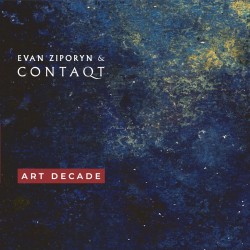 And this just in… As the deadline for filing my column fast approaches I have just received a disc that is inspiring a nostalgic romp down memory lane. Art Decade (Cantaloupe Music contaqtnewmusic.bandcamp.com/album/art-decade) comprising some fabulous music from the time I spent at CKLN-FM in the late ‘80s, is a wonderful revisioning by Evan Ziporan and Toronto’s ContaQt (formerly Contact). Compositions by Robert Fripp, Harold Budd, Brian Eno and David Bowie are featured in stunning arrangements by Ziporan and/or ContaQt founder Jerry Pergolesi.
And this just in… As the deadline for filing my column fast approaches I have just received a disc that is inspiring a nostalgic romp down memory lane. Art Decade (Cantaloupe Music contaqtnewmusic.bandcamp.com/album/art-decade) comprising some fabulous music from the time I spent at CKLN-FM in the late ‘80s, is a wonderful revisioning by Evan Ziporan and Toronto’s ContaQt (formerly Contact). Compositions by Robert Fripp, Harold Budd, Brian Eno and David Bowie are featured in stunning arrangements by Ziporan and/or ContaQt founder Jerry Pergolesi.
Ziporan’s clarinet and bass clarinet are integral parts of the mix, with ContaQt members Allison Wiebe (piano, Rhodes, organ), Andrew Noseworthy (electric guitar and electric bass), Pergolesi (drums, percussion, trumpet), Mary-Katherine Finch (cello) and Sarah Fraser Raff (violin) all contributing to the sometimes gentle ambience and sometimes overpowering wall-of-sound. Fripp’s Red and Larks’ Tongues in Aspic Part Two best fit this latter description, guitarist Joao Carvalho adding to the forces on the former and electric bassist Alex Kotyk supporting the bottom end in both. There is an astounding energy here, and that’s not just my opinion – King Crimson composer and guitarist Fripp calls Larks’ Tongues In Aspic, Part Two “a triumph,” and describes Pergolesi and Ziporan’s version of Red as having “a wonderful manic quality that many of those who cover Red fail to get. By the end, all is good. The world may or may not be in a better place, but it feels like it is.”
These head-bangers are contrasted beautifully by Not Yet Remembered (Budd/Eno), Sense of Doubt (Bowie), and Moss Garden and Neuköln (Bowie/Eno) with their calming and melodious textures. The disc is brought to a gently scintillating conclusion with Fripp and Eno’s Evening Star in an arrangement by Ziporan and Andrew Keeling with guitarist Rob MacDonald added to the ensemble. All in all, this is a surprising and satisfying disc. Thanks for the memories!
Listen to 'Art Decade' Now in the Listening Room
We invite submissions. CDs and DVDs should be sent to: DISCoveries, The WholeNote c/o Music Alive, 192 Spadina Ave, Toronto, ON M5T 2C2*. Comments and digital releases are welcome at discoveries@thewholenote.com.
*Please note new mailing address.



